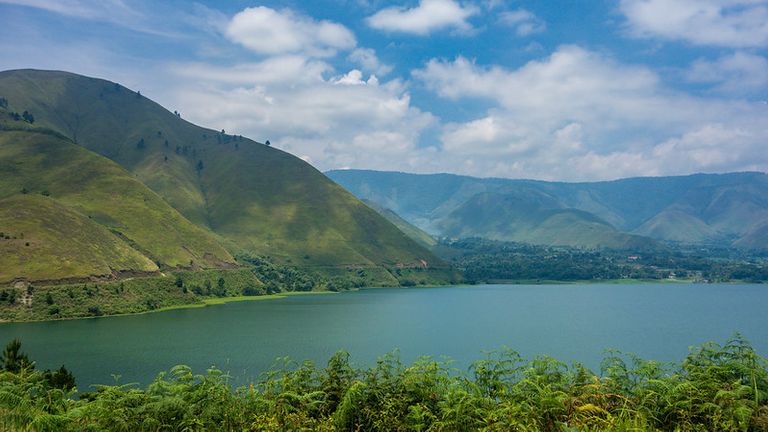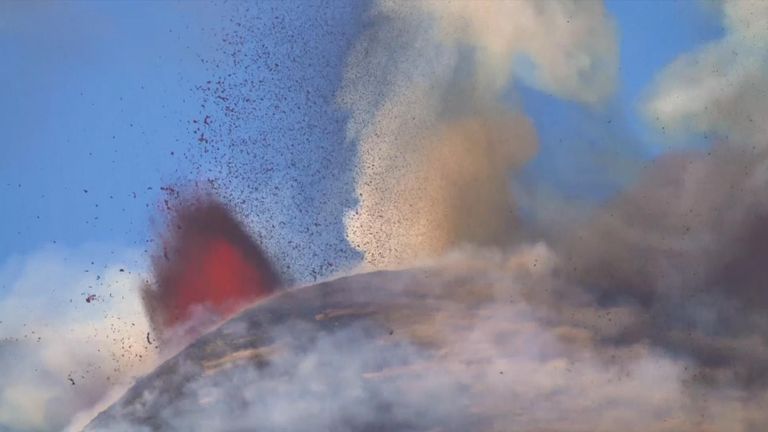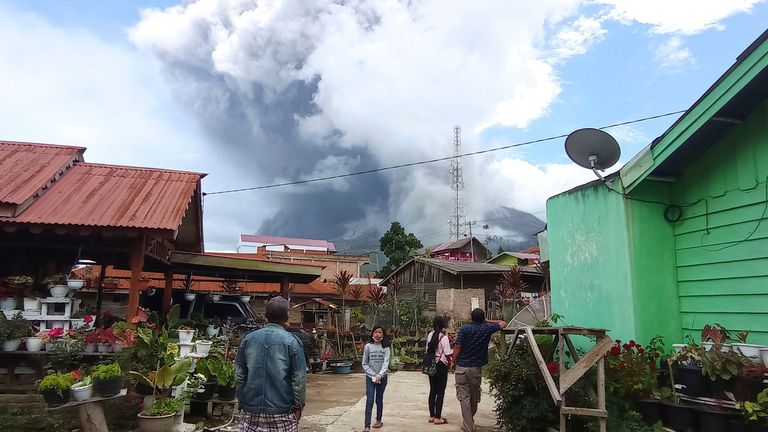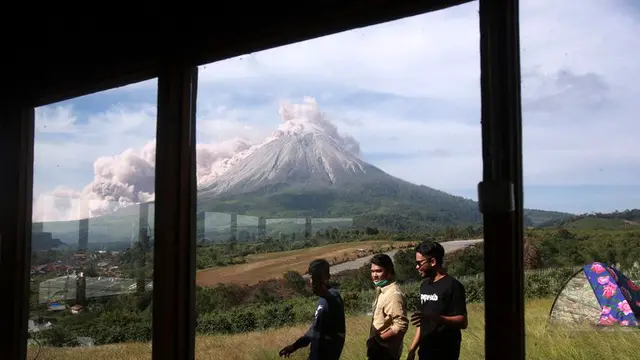A "catastrophic" supervolcano eruption could be much more likely than currently believed, according to a new study.
Existing knowledge about the likelihood of eruptions is based on the presence of liquid magma under a volcano, but new research warns "eruptions can occur even if no liquid magma is found".
"The concept of what is 'eruptible' needs to be re-evaluated," warns Professor Marin Danisik from Curtin University in Australia, lead Australian author of the study from Oregon State University published in the journal Communications Earth & Environment.

Image:The beautiful Lake Toba actually occupies the caldera of a supervolcano. Pic: Klim Levene
Professor Danisik and colleagues have studied Lake Toba in Sumatra, an apparently idyllic body of water that actually occupies the caldera of a supervolcano, measuring about 100km by 30km (62 by 19 miles) across.
This supervolcano is believed to have erupted roughly 74,000 years ago, and some researchers believe the eruption released six billion tons of sulphur dioxide into the atmosphere, leading global temperatures to plummet by 15C (59F) for three years afterwards.
While this scientific analysis of the impact of the eruption is disputed, scientists have suggested that the eruption caused a genetic bottleneck in human evolution.
The hypothesis is that between 50,000 and 100,000 years ago, human populations rapidly shrunk to just 3,000-10,000 individuals, a claim for which there is some genetic evidence.
Scientists have proposed that the Toba eruption may have been the cause of this, destroying the vegetation and food sources these existing human populations depended on.
There are 20 known supervolcanoes on our planet, including the one beneath Lake Toba and another beneath Yellowstone National Park in the US.
The most recent super-eruption came from the supervolcano beneath Lake Taupo in New Zealand about 26,500 BC.
Please use Chrome browser for a more accessible video player

Mount Etna spews lava in daytime spectacle
While these volcanoes are known to have erupted multiple times, with intervals of tens of thousands of years between their big eruptions, it wasn't known what happened to them during their semi-dormant periods.
"Gaining an understanding of those lengthy dormant periods will determine what we look for in young active supervolcanoes to help us predict future eruptions," explained Professor Danisik.
"Super-eruptions are among the most catastrophic events in Earth's history, venting tremendous amounts of magma almost instantaneously. They can impact global climate to the point of tipping the Earth into a 'volcanic winter', which is an abnormally cold period that may result in widespread famine and population disruption.
"Learning how supervolcanoes work is important for understanding the future threat of an inevitable super-eruption, which happen about once every 17,000 years."
The key to the researchers' work was investigating the fate of the magma left behind after the Toba super-eruption 75,000 years ago, something for which they analysed the minerals feldspar and zircon.
These minerals can effectively be used as independent records of time, based on the accumulation of the gasses argon and helium inside the volcanic rocks.

Image:People watch as Mount Sinabung spews volcanic materials during an eruption
"Using these geochronological data, statistical inference and thermal modelling, we showed that magma continued to ooze out within the caldera, or deep depression created by the eruption of magma, for 5000 to 13,000 years after the super-eruption, and then the carapace of solidified left-over magma was pushed upward like a giant turtle shell," Professor Danisik said.
"The findings challenged existing knowledge and studying of eruptions, which normally involves looking for liquid magma under a volcano to assess future hazard. We must now consider that eruptions can occur even if no liquid magma is found underneath a volcano - the concept of what is 'eruptible' needs to be re-evaluated.
"While a super-eruption can be regionally and globally impactful and recovery may take decades or even centuries, our results show the hazard is not over with the super-eruption and the threat of further hazards exists for many thousands of years after.
"Learning when and how eruptible magma accumulates, and in what state the magma is in before and after such eruptions, is critical for understanding supervolcanoes."
 简体中文
简体中文



